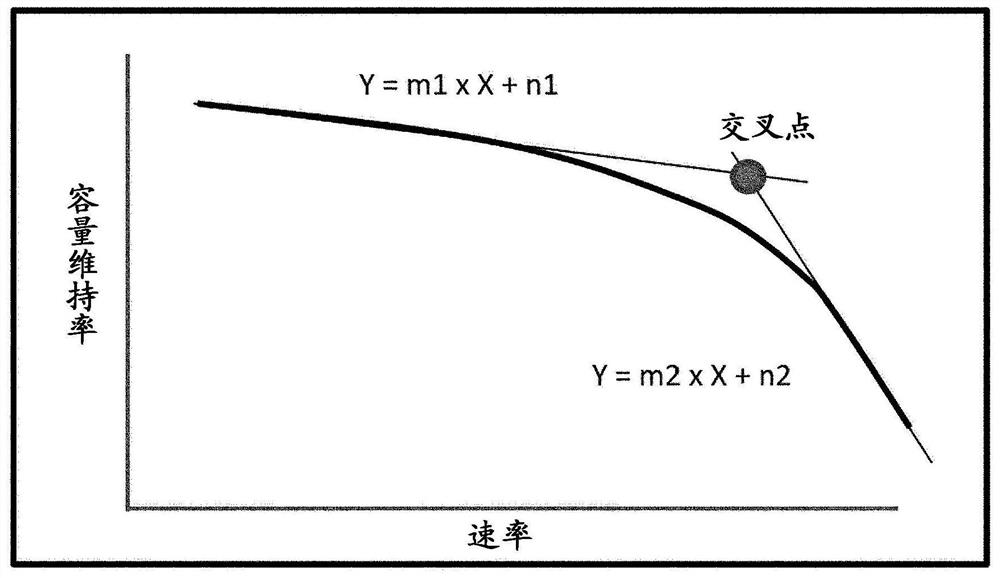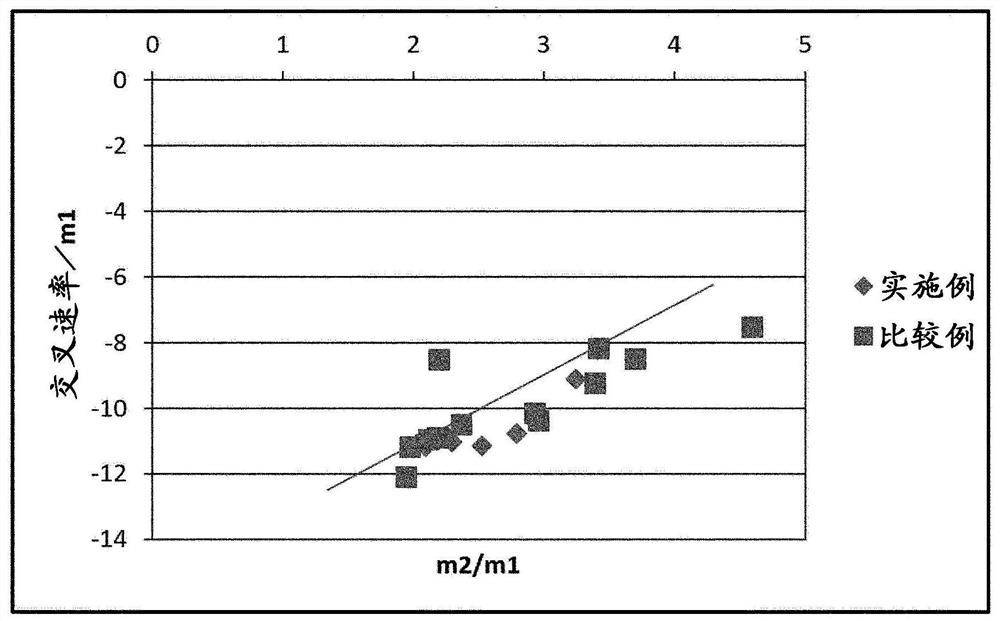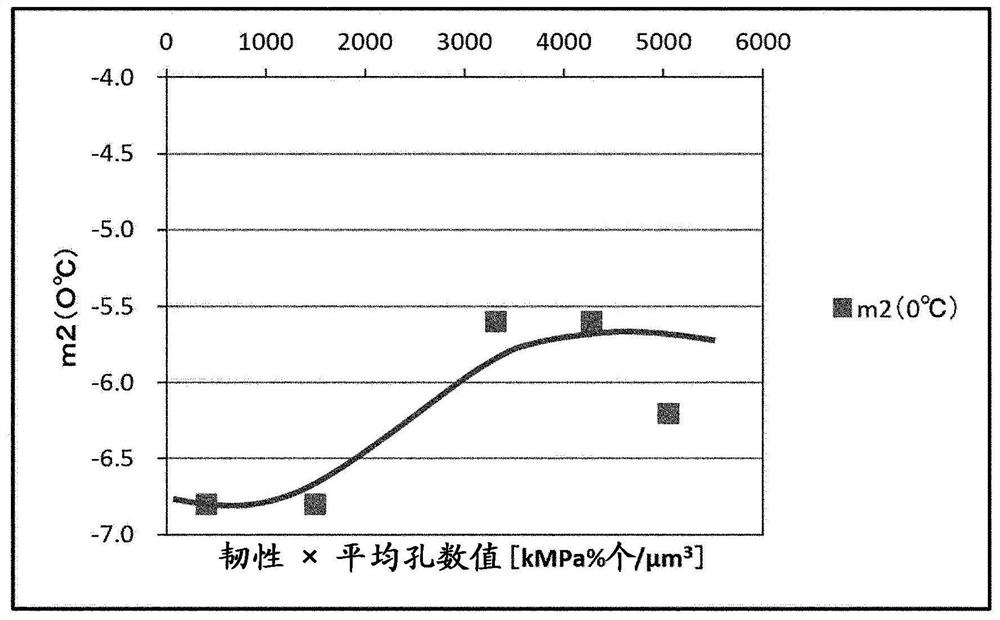Microporous polyolefin film, separator for battery, and secondary battery
A technology of microporous membrane and polyolefin, which is applied to battery components, circuits, electrical components, etc., can solve the problems of shortened battery life and reduced strength, and achieve the effect of excellent battery characteristics
- Summary
- Abstract
- Description
- Claims
- Application Information
AI Technical Summary
Problems solved by technology
Method used
Image
Examples
Embodiment 1
[0318] At a weight average molecular weight of 2.88×10 6 , a molecular weight distribution of 18.4, and a melting point of 100 parts by mass of ultra-high molecular weight polyethylene of 133°C, dry-blended tetrakis[methylene-3-(3,5-di-tert-butyl-4-hydroxybenzene) as an antioxidant Base)-propionate] 0.375 parts by mass of methane to prepare a polyethylene composition.
[0319] 12 parts by mass of the obtained polyethylene composition was charged into a twin-screw extruder. Furthermore, 88 parts by mass of liquid paraffin was supplied from the side feeder of the twin-screw extruder, melt-kneaded, and a polyethylene resin solution was prepared in the extruder.
[0320] Next, a polyethylene resin solution was extruded at 210° C. from a die installed at the front end of the extruder, and an unstretched gel-like sheet was formed while being pulled by a cooling roll whose internal cooling water temperature was kept at 25° C. . The cooled extrudate was first stretched in the MD di...
Embodiment 2
[0323] At a weight average molecular weight of 2.88×10 6 , a molecular weight distribution of 18.4, and a melting point of 100 parts by mass of ultra-high molecular weight polyethylene of 133°C, dry-blended tetrakis[methylene-3-(3,5-di-tert-butyl-4-hydroxybenzene) as an antioxidant base)-propionate] methane 0.375 parts by mass to produce a polyethylene composition.
[0324] 10 parts by mass of the obtained polyethylene composition was charged into a twin-screw extruder. Furthermore, 90 parts by mass of liquid paraffin was supplied from the side feeder of the twin-screw extruder, melt-kneaded, and a polyethylene resin solution was prepared in the extruder.
[0325] Next, a polyethylene resin solution was extruded at 210° C. from a die installed at the front end of the extruder, and an unstretched gel-like sheet was formed while being pulled by a cooling roll whose internal cooling water temperature was kept at 25° C. . The cooled extrudate was first stretched in the MD direc...
Embodiment 3
[0328] At a weight average molecular weight of 2.88×10 6 , a molecular weight distribution of 18.4, and a melting point of 100 parts by mass of ultra-high molecular weight polyethylene of 133°C, dry-blended tetrakis[methylene-3-(3,5-di-tert-butyl-4-hydroxybenzene) as an antioxidant base)-propionate] methane 0.375 parts by mass to produce a polyethylene composition.
[0329] 11 parts by mass of the obtained polyethylene composition were charged into a twin-screw extruder. Furthermore, 89 parts by mass of liquid paraffin was supplied from the side feeder of the twin-screw extruder, melt-kneaded, and a polyethylene resin solution was prepared in the extruder.
[0330] Next, a polyethylene resin solution was extruded at 210° C. from a die installed at the front end of the extruder, and an unstretched gel-like sheet was formed while being pulled by a cooling roll whose internal cooling water temperature was kept at 25° C. . For the cooled gel-like sheet, preheating temperature / s...
PUM
| Property | Measurement | Unit |
|---|---|---|
| strength | aaaaa | aaaaa |
| softening point | aaaaa | aaaaa |
| melting point | aaaaa | aaaaa |
Abstract
Description
Claims
Application Information
 Login to View More
Login to View More - R&D Engineer
- R&D Manager
- IP Professional
- Industry Leading Data Capabilities
- Powerful AI technology
- Patent DNA Extraction
Browse by: Latest US Patents, China's latest patents, Technical Efficacy Thesaurus, Application Domain, Technology Topic, Popular Technical Reports.
© 2024 PatSnap. All rights reserved.Legal|Privacy policy|Modern Slavery Act Transparency Statement|Sitemap|About US| Contact US: help@patsnap.com










